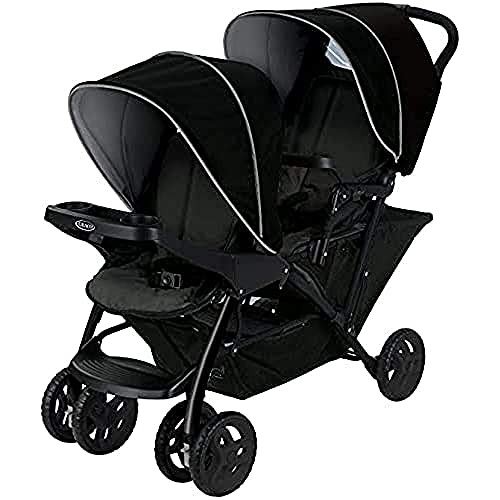The Most Significant Issue With Prams Pushchairs, And How You Can Fix It
Understanding Baby Prams and Pushchairs: A Comprehensive Guide
When it comes to taking care of a newborn or a baby, couple of items are as vital as a trustworthy baby pram or pushchair. These mobility help supply a safe, comfy way to transport babies while allowing moms and dads and caregivers the liberty to navigate the world. This post explores the various aspects of baby prams and pushchairs, helping moms and dads make notified choices about which product might be best matched for their household's requirements.
What Are Baby Prams and Pushchairs?
Baby Prams: These are normally developed for infants and very young babies. They have fully reclining seats that enable a flat position, making them suitable for newborns. Prams typically feature a large, deep body, offering extra security and comfort.
Pushchairs: Pushchairs, also called strollers, are more versatile and can generally be adjusted for young children as well. They are light-weight, simple to steer, and typically include a range of seating positions, including reclined and upright.
Function
Baby Prams
Pushchairs
Ideal Age
Newborn to around 6 months
Newborn to 3 years or more
Seat Position
Fully reclined
Adjustable (reclined and upright)
Weight
Much heavier, more robust
Lighter, more compact
Folding Mechanism
More complicated folding
Generally simpler folding
Maneuverability
Can be less maneuverable
Highly maneuverable
Secret Features to Consider
When choosing a baby pram or pushchair, prospective purchasers should consider numerous crucial features that can influence the use and comfort for both the child and the caretaker.
1. Security Features
- Five-point Harness: Ensures the baby is securely strapped in.
- Brakes: Reliable braking systems avoid accidents.
- Stability: A large base and well-constructed frame boost stability.
2. Comfort
- Cushioning: Ample cushioning on the seat guarantees convenience.
- Suspension System: Provides a smoother ride on irregular surface areas.
- Canopy: A big, adjustable canopy secures the baby from sun and rain.
3. Mobility
- Weight: Lighter models are easier to raise and bring.
- Folding Mechanism: Easy folding styles enable fast storage and transportation.
- Compact Size: A more compact size makes it simpler to suit car boots and tight areas.
4. Flexibility
- Convertible Options: Some models can be changed from a pram to a pushchair.
- Reversible Seat: Allows the baby to face the parent or the world, depending upon preference.
- Devices: Look for alternatives that can accommodate cars and truck seats or have a storage basket.
5. Toughness
- Product Quality: Invest in higher-end products for durability.
- Weather Resistance: Water-resistant materials guarantee that the pram/pushchair can hold up against numerous climate condition.
Kinds Of Baby Prams and Pushchairs
Numerous types of baby prams and pushchairs satisfy different function requirements, lining up with moms and dads' specific lifestyles.
1. Travel Systems
Travel systems normally integrate a safety seat and a stroller in one plan, enabling smooth transport from car to pram or pushchair without interrupting the baby.
2. Umbrella Strollers
Umbrella strollers are lightweight and convenient, designed for easier maneuverability. They are ideal for quick journeys and may lack some functions discovered in full-size strollers.
3. All-Terrain Pushchairs
These are ideal for active households who enjoy hiking or taking walks on rugged terrains. They usually feature bigger wheels for stability.
4. Jogging Strollers
Jogging strollers are developed for parents who wish to integrate workout with childcare. They include durable frames and repaired front wheels to boost safety throughout a run.
The Importance of Choosing the Right Option
Choosing the suitable baby pram or pushchair is not merely a matter of choice; it directly affects the security and convenience of the baby. Additionally, the right choice can profoundly influence the way of life of the caretakers.
Advantages:
- Convenience: A well-chosen pram or pushchair makes getaways simpler and more enjoyable.
- Health: Proper support helps in spinal and skeletal development in babies.
- Bonding: Outdoors play an important role in parent-child bonding.
Frequently Asked Questions (FAQs)
1. At what age can my baby utilize a pushchair?
Most pushchairs are designed to accommodate babies as young as six months, although some designs can be gotten used to safely carry newborns when used with compatible cars and truck seats.
2. How do I maintain my baby pram or pushchair?
Regular cleansing is essential. Wipe down the frame and material with a damp cloth and moderate soap. Periodically examine the wheels and brakes for wear and tear.
3. Can I utilize a baby pram for running?
Usually, no. Routine baby prams lack the stability and style required for running. It is much safer to use a stroller particularly designed for that function.
4. How do Double Pram Compact select the right size?
Think about how often you will be utilizing the pram/pushchair and where. If area is restricted, try to find a more compact style. For outdoor adventures, choose for one with bigger wheels and excellent suspension.
Baby prams and pushchairs are important tools for parents and caretakers, permitting safe and comfortable transportation of babies and toddlers. By comprehending the numerous functions, types, and benefits included, caregivers can choose the best movement help matched to their needs. Whether it be an advanced travel system or an easy umbrella stroller, the right purchase can significantly boost the experience of being a parent, making getaways pleasurable and trouble-free for both moms and dads and babies alike.
